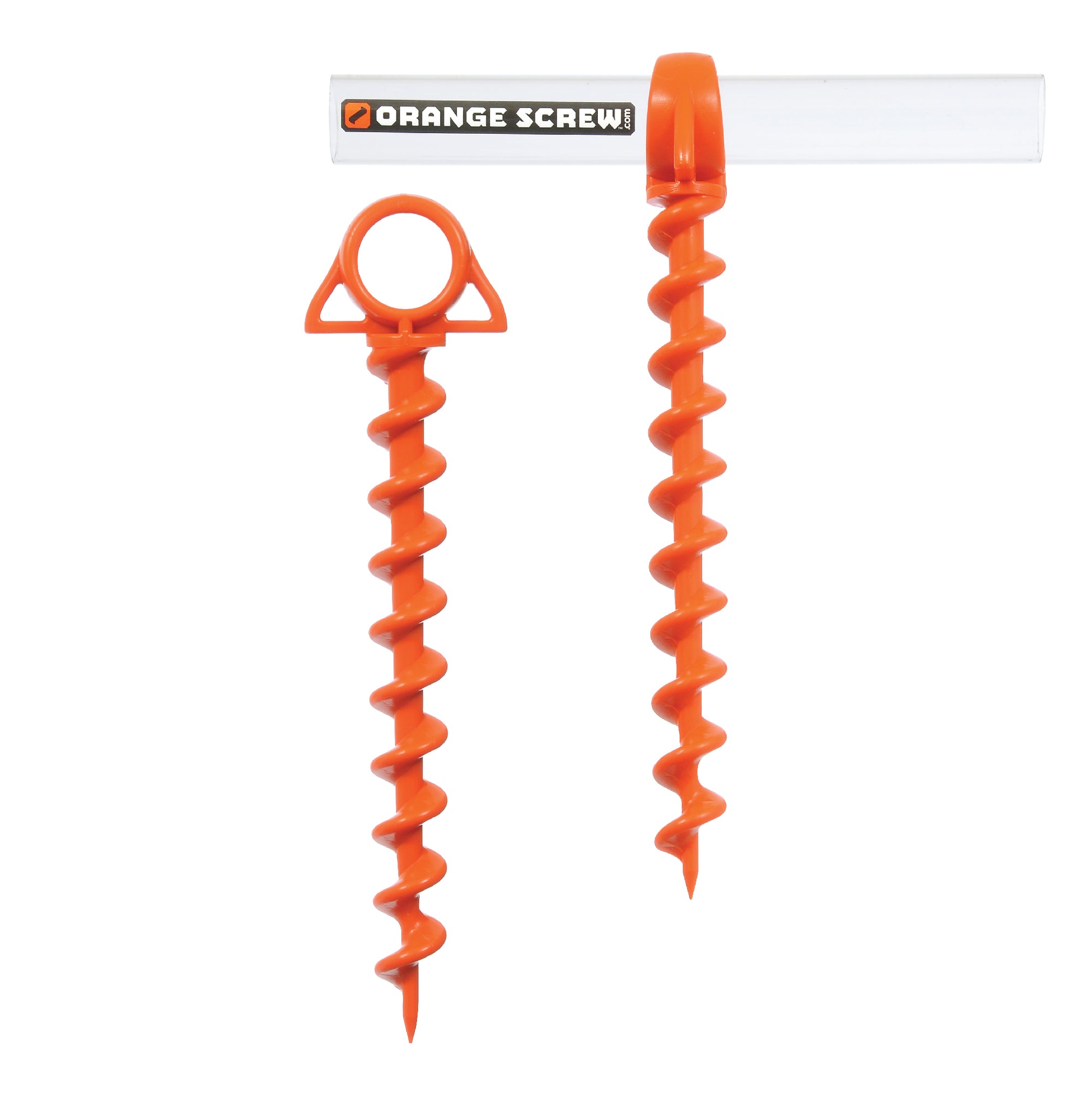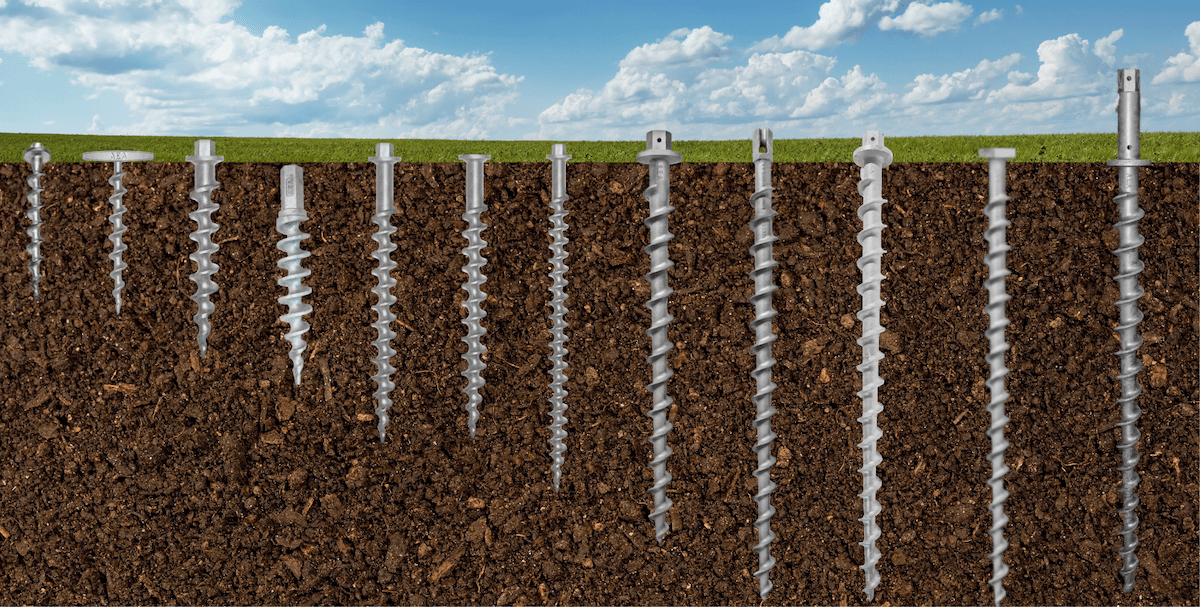Just How Durable Earth Anchors Job: A Comprehensive Guide to Dirt Anchoring Solutions
Durable Earth supports play a crucial duty in providing security and assistance in numerous construction applications. By installing deeply into the ground, they stand up to upright and side forces successfully. Different types of supports accommodate various dirt conditions, making them flexible. Comprehending their technicians and installment strategies is crucial for taking full advantage of performance. What elements influence their efficiency, and how do they contrast to traditional approaches? The solutions might stun you.
Comprehending Sturdy Earth Anchors
Durable Earth anchors work as important elements in different building and landscaping tasks, offering stability and assistance in challenging soil problems. These anchors work by being installed into the ground, where they resist side and upright forces. Their style enables safe and secure attachment to frameworks, ensuring they continue to be anchored against dirt motion or outside loads.The effectiveness of heavy-duty Earth anchors greatly depends upon the kind of soil and the anchor's setup depth. Appropriate installation strategies are essential, as they figure out the support's holding ability. Ecological elements, such as moisture and freeze-thaw cycles, can also influence performance.These supports are often made use of in applications ranging from protecting fencings and keeping wall surfaces to stabilizing short-term structures during adverse climate condition. Recognizing the concepts behind heavy-duty Earth anchors is crucial for specialists seeking to boost the resilience and safety of their projects.
Kinds of Heavy-Duty Earth Anchors
Numerous kinds of heavy-duty Earth supports are created to meet particular demands based upon soil problems and job requirements. Helical anchors, including screw-like blades, work in softer dirts, supplying high lots capabilities and very easy installment. Driven supports, which are inculcated the ground, appropriate for rocky surfaces and give instant lots assistance. Tie-back anchors are generally utilized in maintaining wall applications, enabling side support by securing into the ground at an angle. One more kind is the cast-in-place anchor, perfect for concrete applications, as they are incorporated into structures for enhanced security. Finally, dirt screw supports are functional options that can be utilized in numerous soil types, giving dependable stress and compression abilities. Each type serves unique applications, making certain security and safety and security in construction and landscaping tasks. Understanding these choices enables educated choices in choosing the appropriate Earth anchoring remedy.
The Mechanics of Dirt Anchoring

Understanding the auto mechanics of soil anchoring needs an examination of numerous kinds of Earth anchors and their installment methods. Each anchor kind provides special qualities that affect its performance in different dirt problems. Correct setup methods are necessary for making best use of the securing system's stability and efficiency.
Kinds of Earth Anchors
Earth supports, vital elements in soil anchoring systems, been available in several kinds, each made for certain applications and soil conditions. One of the most typical types consist of screw supports, which are turned into the ground, giving strong lateral resistance. Helical anchors include blades that enable effective setup in different dirt kinds, making them appropriate for both temporary and long-term applications. Driven anchors, typically made from steel, are hammered into the dirt and work in dense or rough atmospheres. Auger supports utilize a helical style to help with installment in softer soils. Ultimately, plate supports contain a level plate buried flat, distributing lots over a bigger location, ideal for applications requiring high load capacities in cohesive dirts.
Setup Techniques Clarified
Proper installation methods are important for the efficiency of soil anchoring systems. The process normally starts with site evaluation, confirming the picked area can support the anchor's load. After determining the right support type, appropriate opening depth and angle have to be established. The installment includes driving the support into the ground utilizing specialized devices, such as hand-operated or hydraulic vehicle drivers, to attain best embedment. Post-installation, tensioning the anchor is critical to guarantee stability; this is commonly confirmed with load screening. Additionally, bordering dirt conditions must be monitored to avoid displacement. Following these methods not just boosts the support's performance but likewise extends its lifespan, supplying reputable assistance for different applications.
Applications of Heavy-Duty Earth Anchors
While sturdy Earth anchors are usually connected with construction and landscape design, their adaptability prolongs to a range of applications across different sectors. In civil design, they offer crucial assistance for retaining wall surfaces, guaranteeing stability in locations vulnerable to dirt erosion. The aquatic sector makes use of these anchors for protecting docks and marinas, protecting against motion triggered by tides and currents. In addition, in the telecom sector, heavy-duty Earth supports are significant for stabilizing cell towers and other high structures against Find Out More wind forces. Agricultural applications additionally benefit, as these supports can secure structures like greenhouses and animals fencing, ensuring they hold up against severe climate condition. Additionally, in sustainable energy jobs, such as wind farms, Earth anchors play a crucial function in protecting turbine foundations, enhancing total safety and security and efficiency. This wide variety of applications highlights the flexibility and reliability of durable Earth supports throughout different fields.
Advantages Over Typical Anchoring Techniques
Conventional anchoring approaches have actually long been counted upon for stability, heavy-duty Earth supports supply significant benefits that boost efficiency and efficiency. One major advantage is their exceptional load-bearing capability, which enables them to hold up against greater pressures without failure. This stamina makes them optimal for demanding applications, such as in building and energy installations.Additionally, sturdy Earth supports are developed for deeper setup, offering greater security in various soil conditions, consisting of sandy or loosened dirts. Their resistance to deterioration and environmental factors ensures a much longer life-span and decreased maintenance costs contrasted to conventional methods.Moreover, these anchors can be set up with minimal disruption to the surrounding area, maintaining the integrity of the landscape. On the whole, durable Earth anchors offer a effective and dependable option for anchoring needs, exceeding the restrictions commonly related to typical anchoring methods.
Setup Refine and Finest Practices
The installment procedure for dirt securing remedies begins with detailed preparation and website analysis to guarantee peak performance. Following this, a detailed setup overview offers clear instructions for effective execution (tensile load anchors). Abiding by these finest methods is important for accomplishing reputable and resilient anchoring results
Prep Work and Site Analysis
Effective preparation and thorough website examination are essential steps in the installment of official statement dirt securing remedies. Prior to installation, the soil kind have to be analyzed to determine its bearing ability and suitability for anchoring. Performing a geotechnical survey can give crucial details regarding soil structure, wetness levels, and prospective ground motion. Furthermore, identifying existing structures, greenery, and energies is necessary to stay clear of disturbance during installment. The area should be free from debris and barriers to guarantee risk-free gain access to for tools. Weather conditions should likewise be monitored, as adverse problems can affect both safety and installment effectiveness. By diligently preparing the site and examining all pertinent elements, the likelihood of successful anchor performance is considerably boosted.
Step-by-Step Setup Overview
A detailed setup procedure is vital for attaining excellent performance of soil securing options. The installment begins with choosing the proper support type and guaranteeing the website is free from debris. Next, proper opening positioning is figured out based upon lots demands. Once the place is developed, openings are drilled to the defined depth and diameter making use of the proper tools. The anchor is after that inserted right into the opening, making certain it is lined up properly. After securing the support, soil is backfilled and compressed to enhance stability. It is necessary to adhere to maker guidelines throughout the process. A post-installation assessment verifies that the supports are properly positioned and operating as planned, supplying trusted support for the intended application.

Maintenance and Evaluation of Earth Anchors
Routine upkeep and evaluation of Earth supports are necessary for making certain long-term efficiency and security. Periodic checks permit for the very early discovery of issues such as rust, loosening, or dirt motion. Inspectors ought to try to find indicators of corrosion or degradation on the support elements, specifically at the connection factors. Furthermore, the surrounding dirt must be analyzed for erosion or adjustments in wetness web content, which can impact anchor effectiveness.It is advisable to develop a regular evaluation schedule, ideally a minimum of yearly, depending on ecological conditions. Throughout assessments, all noticeable elements ought to be cleansed to eliminate dust or debris that could conceal potential troubles. Any indicators of distress, such as tilting frameworks or uncommon settling, need to trigger instant analysis. Appropriate documentation of assessments can assist in monitoring anchor performance over time and facilitate prompt maintenance actions, making certain the anchors stay trustworthy and functional.
Regularly Asked Inquiries
What Products Are Heavy-Duty Earth Anchors Commonly Made From?
Sturdy Earth anchors are generally created from long lasting products such as galvanized steel or stainless-steel, making sure stamina and resistance to corrosion. These products supply durable assistance and security in different dirt conditions and applications.
Just How Do Soil Problems Affect Anchor Performance?
Soil conditions substantially affect anchor efficiency. Factors such as soil kind, dampness material, and compaction impact the anchor's hold and stability, with natural dirts typically supplying far better resistance than sandy or loosened soils, impacting general effectiveness.
Can Heavy-Duty Earth Anchors Be Recycled After Elimination?
Sturdy Earth anchors can be reused after elimination, provided they are evaluated for damage and wear. Proper cleansing and maintenance enhance their long life, making sure efficient efficiency in subsequent installations when conditions enable safe reinstallation.
What Are the Environmental Influences of Making Use Of Earth Anchors?
The ecological influences of utilizing Earth anchors include prospective soil disruption, disturbance of neighborhood ecosystems, Manta Ray anchors and possible contamination of groundwater. However, if used properly, their benefits often exceed these concerns, promoting security in numerous applications.
How Do I Pick the Right Support for My Job?

Comments on “Using construction site anchors When Conditions Are Tough”